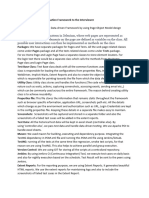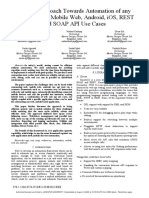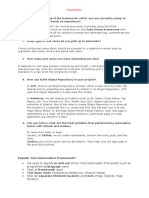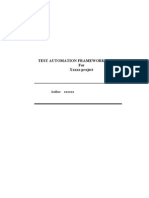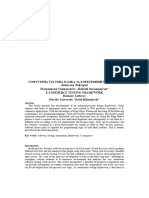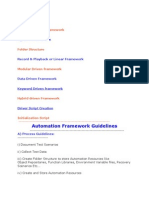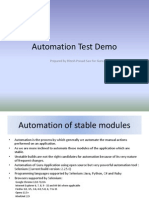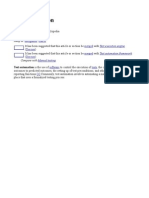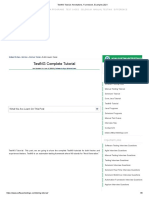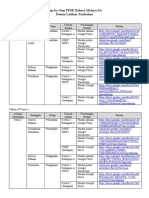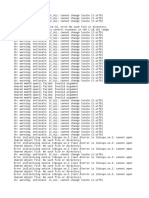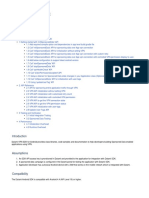0% found this document useful (0 votes)
30 views4 pagesFrameWork - Architecture
The document outlines a framework for automation testing, detailing its structure, components, and phases. Key components include common utilities, POM/Object Repository, test data, and execution tools like TestNG and Jenkins, which facilitate efficient test script development and execution. The framework offers advantages such as reusability, easier maintenance, and automated reporting, while also highlighting the need for programming skills as a potential disadvantage.
Uploaded by
GaneshMashetteCopyright
© © All Rights Reserved
We take content rights seriously. If you suspect this is your content, claim it here.
Available Formats
Download as DOCX, PDF, TXT or read online on Scribd
0% found this document useful (0 votes)
30 views4 pagesFrameWork - Architecture
The document outlines a framework for automation testing, detailing its structure, components, and phases. Key components include common utilities, POM/Object Repository, test data, and execution tools like TestNG and Jenkins, which facilitate efficient test script development and execution. The framework offers advantages such as reusability, easier maintenance, and automated reporting, while also highlighting the need for programming skills as a potential disadvantage.
Uploaded by
GaneshMashetteCopyright
© © All Rights Reserved
We take content rights seriously. If you suspect this is your content, claim it here.
Available Formats
Download as DOCX, PDF, TXT or read online on Scribd
/ 4












